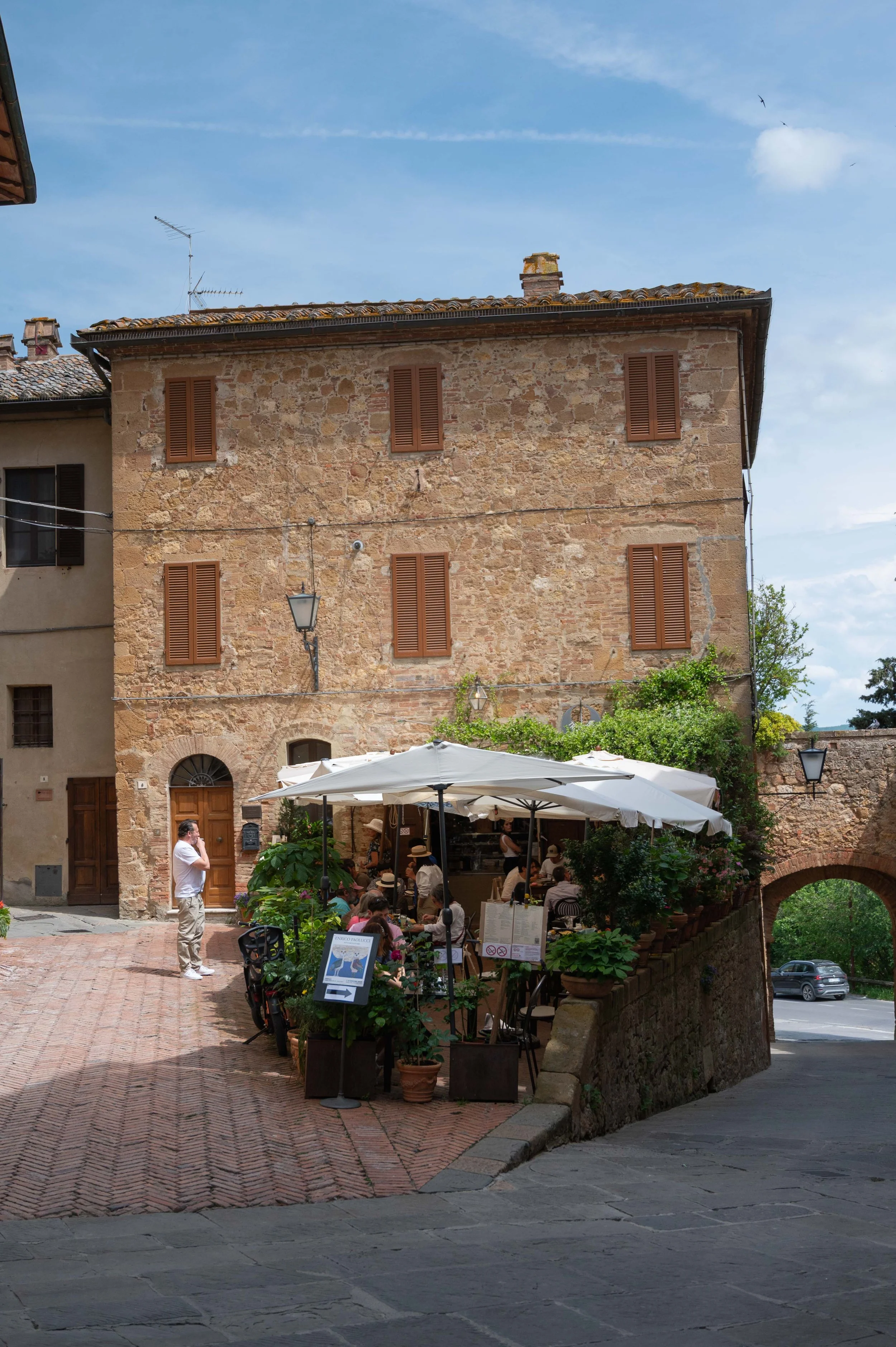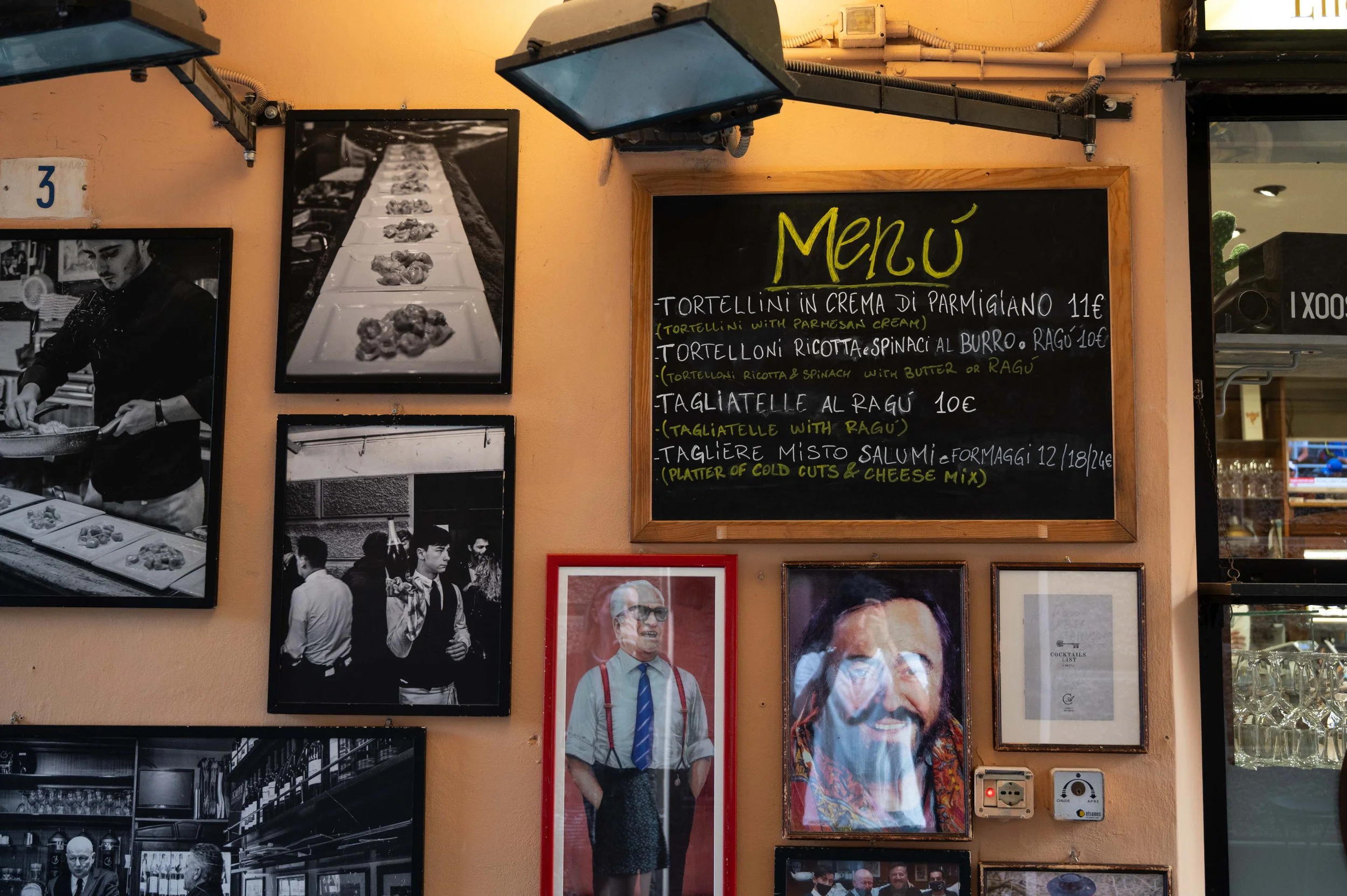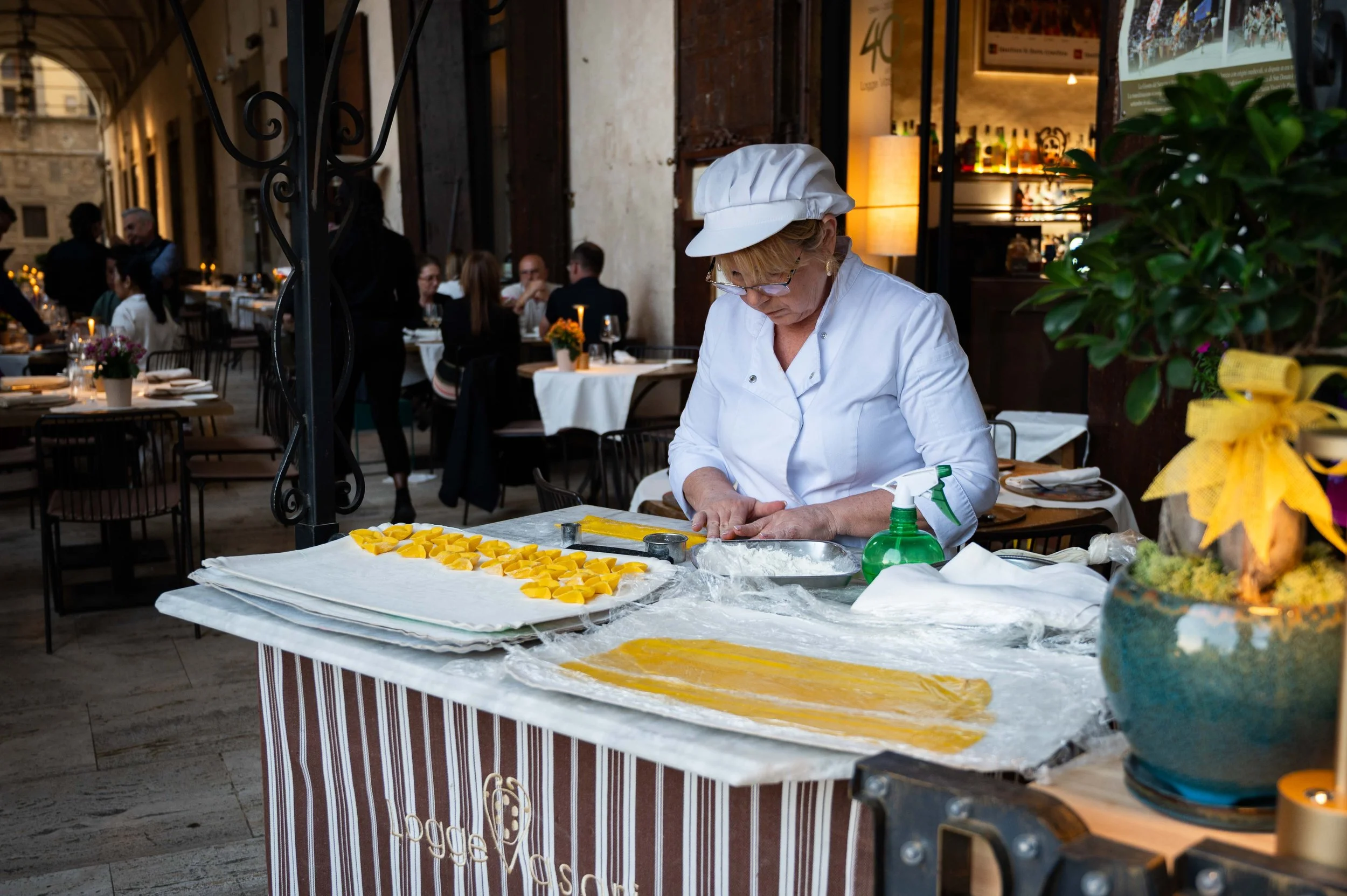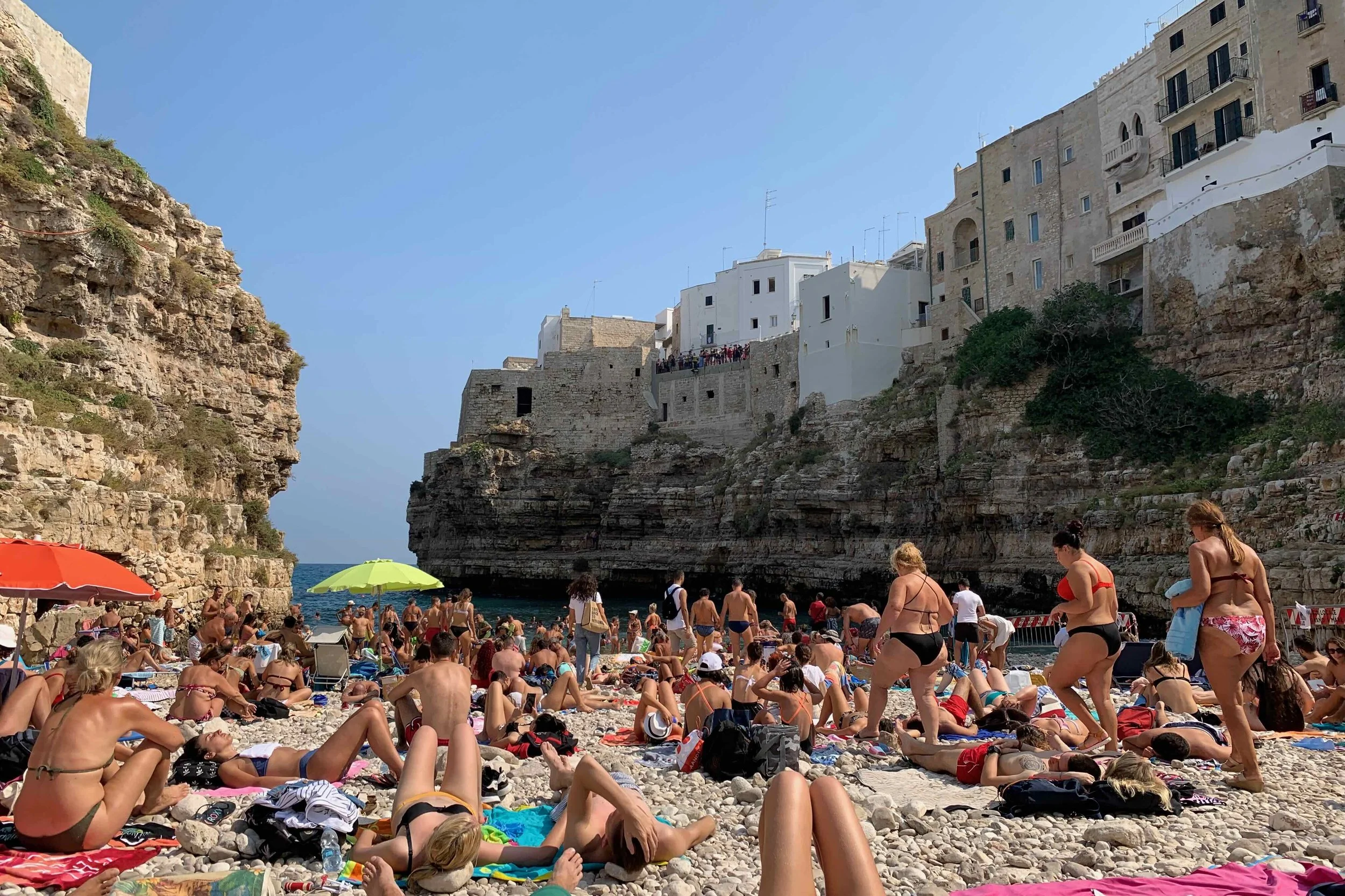How to Eat Out in Italy: A Guide to Italian Food Culture and Restaurants
Dining in Italy is not something you squeeze in between activities — it is the activity. Meals are unhurried, deeply rooted in regional traditions, and often tied to family, seasonality, and local pride. But if you’ve ever stared at a street full of trattorias, osterias, and ristorantes wondering which to choose, you’re not alone.
This guide breaks down the various types of Italian dining establishments and also dives into food culture across the regions, what to expect from the menu, local etiquette, and how to find places that serve truly memorable meals, not just meals made for tourists.
Whether you’re planning your first trip to Italy or returning to explore deeper, this is your go-to guide to eating like a local.
In this article:
Italian food culture: key tips
How to pick where to eat in Italy
Types of Restaurants in Italy
Trattoria
Atmosphere: Casual, family-run, rustic
Food: Regional, home-style dishes, often with recipes passed down through generations
Pricing: Mid-range, generous portions
Good for: Authentic meals with a lived-in feel
Trattorias are the heart of Italian food culture. They tend to be simple, relaxed spots that focus on quality over fuss. Don’t expect polished service or modern presentation — the charm is in the authenticity. Menus are usually handwritten or on a chalkboard, often dictated by what's fresh that day.
We usually look for trattorias most evenings when searching for dinner.
Trattoria Latte di Luna - Pienza
Osteria
Atmosphere: Originally, simple taverns, now vary from casual to trendy
Food: Traditional and regional, sometimes with a twist
Pricing: Often affordable, but some modern osterie can be pricier
Good for: Local specialities, wine by the carafe
Historically, an osteria was a place for simple food and wine, serving local workers. Today, the term has evolved — some osterias have become more refined, offering modern takes on classics, while others stick to their humble roots. It's always worth taking a look at the menu and the setting before sitting down.
Ristorante
Atmosphere: Formal, professional service, often elegant
Food: Sophisticated, multi-course meals, sometimes haute cuisine
Pricing: Higher-end
Good for: Special occasions, fine dining
A ristorante is what most people imagine when thinking of a restaurant. These places often have a more structured menu (antipasti, primi, secondi, contorni, dolci), trained chefs, and more attentive service. It’s where you might find Michelin-starred cuisine or a curated regional tasting menu.
Expect a meal in a ristorante to take a few hours.
Ristorante Montana - Maranello
Enoteca
Atmosphere: Wine-focused, intimate
Food: Small plates, cured meats, cheeses, light dishes
Pricing: Varies depending on wine list
Good for: Aperitivo, wine lovers, relaxed grazing
Originally a wine shop, an enoteca now often refers to a wine bar or a casual eatery with a strong focus on local wines. Food takes a back seat to the wine, but many offer excellent light dishes — think bruschetta, taglieri (charcuterie boards), or a small pasta option.
Perfect for pre-dinner drinks or a light meal.
Enoteca Italiana - Bologna
Agriturismo
Atmosphere: Countryside, rustic, farm-to-table
Food: Hyper-local, seasonal, traditional
Pricing: Generally good value
Good for: Slow travel, regional dishes, fresh ingredients
An agriturismo is a working farm that also offers accommodation and meals. You’ll usually need a car to reach one, but it’s worth it — the food is made with local produce, much of it grown or raised on site. Meals are set menus served family-style and reflect what’s in season. Book ahead.
Tavola Calda
Atmosphere: Cafeteria-style, no-frills
Food: Ready-to-eat dishes, good for lunch
Pricing: Cheap
Good for: Fast, hot meals, workers' lunch spots
Translating to "hot table", a tavola calda is a cross between a canteen and a deli. They’re common in cities for quick lunches. You’ll find trays of lasagna, meatballs, vegetables, and pasta that you choose at the counter and eat in or take away.
Pizzeria
Atmosphere: Lively, casual, great for families
Food: Pizza (of course), often wood-fired, with limited sides
Pricing: Affordable
Good for: Dinner with friends, simple night out
Many pizzerias are open only in the evenings. While pizza is the star, they often offer salads, fried starters (like supplì or arancini), and a few desserts. Some more modern pizzerias might incorporate sourdough bases or gourmet toppings.
Bar
Atmosphere: Buzzing, multifunctional
Food: Breakfast pastries, sandwiches, coffee, sometimes an aperitivo
Pricing: Very reasonable
Good for: Coffee, a quick snack, watching daily life
An Italian bar isn’t just for booze. It’s where locals grab a quick espresso in the morning, a panino at lunch, and perhaps a spritz in the evening. In larger cities, bars often offer aperitivo, where you pay for a drink and receive a small buffet of snacks as part of the package.
Italian Food Culture: Key Tips
Meals Are Ritualised
Lunch is around 12:30–2:30 pm
Dinner starts from 7:30 pm onwards
Aperitivo usually kicks off from 5:30–7:30 pm
Outside of tourist-heavy areas, don’t expect to eat at 5 pm or have dinner before 7. Many kitchens close between lunch and dinner, so plan accordingly. If you are walking around at 13:30 looking for a lunch space you’re going to be dissapointed!
Menu Structure
A full Italian meal can include:
Antipasti: Starters
Primi: First course (pasta, risotto, soup)
Secondi: Main course (meat or fish)
Contorni: Side dish (vegetables, salad)
Dolce: Dessert
You’re not expected to order every course — many locals opt for just a primo and contorno or a secondo and a glass of wine.
Cover Charge & Tipping
A coperto (cover charge) of €1–3 per person is common
Pane (bread) may be charged separately
Tipping is not obligatory — rounding up or leaving a few euros is appreciated for good service
Regional Differences: A Country of Micro Cuisines
Italy isn’t just one cuisine — it’s hundreds. Each region, even each town, has its own ingredients, cooking methods, and restaurant culture. What you’ll find on a trattoria’s menu in Florence will differ entirely from one in Naples or Palermo.
Here are a few examples:
Tuscany: Expect rustic simplicity — grilled meats (bistecca alla Fiorentina), unsalted bread, hearty soups like ribollita, and earthy wines like Chianti.
Emilia-Romagna: The land of fresh egg pasta, ragù, mortadella, and balsamic vinegar. Trattorias here often serve tortellini in broth or handmade tagliatelle.
Sicily: Bold, vibrant flavours — aubergine, ricotta, capers, sardines. You'll find couscous in the west, and pistachio pasta in the east.
Veneto: Polenta, seafood risotto, and cicchetti (Venetian tapas), especially in osterie and wine bars.
Puglia: Home of orecchiette, burrata, and olive oil-rich dishes. Look for simple trattorias using sun-drenched produce.
Understanding what the area is known for will guide you toward the best, most authentic food.
Aperitivo: Italy's Pre Dinner Ritual
The aperitivo is a cherished Italian tradition — a pre-dinner drink paired with light bites, designed to whet your appetite and unwind with friends.
Timing: Usually between 5.30 pm and 7.30 pm
Drinks: Aperol spritz, Negroni, prosecco, Campari soda
Food: Ranges from crisps and olives to small buffet spreads or generous platters of meats and cheeses (apericena — where aperitivo turns into dinner)
In northern cities like Milan or Turin, aperitivo is often elaborate, with bars offering small buffets included in the drink price.
In smaller towns, it may be simpler — a handful of olives or a few crisps alongside your drink.
Aperitivo in Bolonga
How to Pick Where to Eat in Italy
Avoid places with menus in ten languages or ones that push photos of food
Ask locals — your host, a shopkeeper, or someone at a wine bar will likely give great recommendations
Look for handwritten menus and chalkboards — they often mean fresh, seasonal dishes
Check the vibe: Is it full of locals? Does the food look fresh? How’s the smell? Trust your senses
Trust regionality: Order what the area is known for (e.g. truffle pasta in Umbria, seafood in Sicily, ragù in Emilia-Romagna)
Reservations and Restaurant Hours in Italy
Italy doesn’t always follow the same rhythms as other countries, especially when it comes to eating out.
Make a reservation for popular trattorias and ristorantes, even at lunch, especially in small towns or on weekends
Opening hours: Most places open for lunch (12:30–2:30 pm) and dinner (7:30–10:30 pm). Between those times, many kitchens are closed. Lunch service typically ends around 2:00 p.m.
Many restaurants close one day a week, often Monday or Tuesday. Check in advance
Beware of August holidays: Many popular spots will close in August for one or two weeks to give their staff time off, or give the owning families a chance to holiday, so if you’re looking to eat at a certain place, make sure you check in advance.
Online booking isn’t always an option — a quick phone call or popping in earlier in the day works best
Punctuality isn’t rigid. If you arrive ten minutes late, no one will bat an eyelid.
Pasta being prepared in Arezzo
Italian Eating Etiquette - Don't Be a Rookie
Italians take food seriously, and there are a few unspoken rules that will help you blend in.
Do:
Eat slowly — meals are to be enjoyed, not rushed
Wait to be seated — even in casual places
Say “Buon appetito!” to your table before digging in
Ask for the bill when you’re ready (Il conto, per favore) — it won’t be brought automatically. Rushing diners is rude, so you will need to ask for the bill.
Don’t:
Order a cappuccino after 11 am — it’s seen as too milky for digestion post-meal
Expect your pasta and meat at the same time — primo and secondo are separate courses
Request parmesan on seafood pasta — this is a huge no
Cut spaghetti with a knife or spoon — twirl it, always
Respecting the rhythm of a meal — and the culture that goes with it — shows you’re not just a tourist, but a curious and thoughtful guest.
Final Thoughts
Eating in Italy is about much more than food. It’s about slowing down, appreciating the moment, and enjoying the people you're with. Understanding the different types of restaurants helps you choose the right setting for the experience you want. Whether it’s a long lunch at a countryside agriturismo or a buzzing night at a neighbourhood trattoria.
Buon appetito!
“The Science of Cooking and the Art of Eating Well”






















Discover the history, traditions, and unique style of Italian coffee. Learn how espresso is enjoyed in Italy and how it differs from modern café culture.